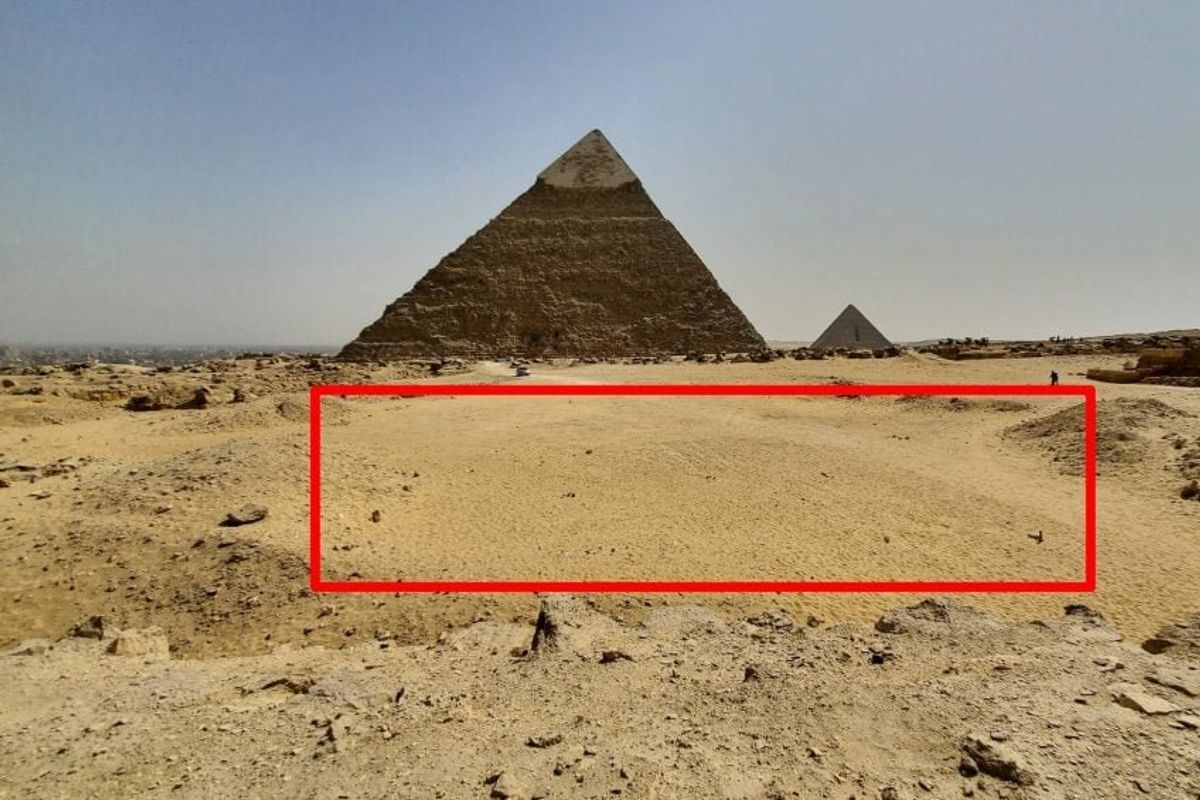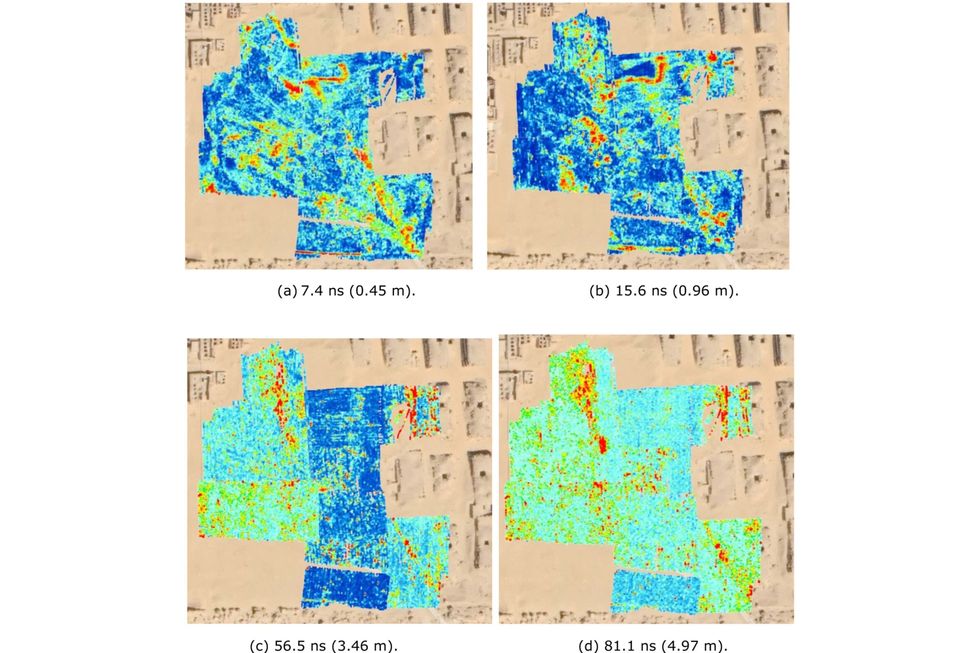Science & Tech
Harriet Brewis
Sep 20, 2024
Egypt: Scientists reveal hidden corridor in Great Pyramid of Giza
Aljazeera / VideoElephant
Egypt’s Great Pyramid of Giza may be one of the most iconic landmarks on the planet but, beneath its surrounding sands, there still lie countless untold secrets.
Now, archaeologists have uncovered a mysterious L-shaped structure buried beside the ancient monument, which they believe was built at the same time – around 4,500 years ago.
Perhaps most extraordinarily is that another "anomaly" lies beneath this L-shaped feature, suggesting that the latter might have been a chamber leading to the area below.
The international team of researchers, based in Japan and Egypt, discovered the mysterious structures by scanning the surface of Giza’s Western Cemetery with ground-penetrating technology.
This burial ground was reserved for royal family members of King Khufu – the ruler for whom the Great Pyramid was built – as well as high-ranking officials who were laid to rest in aboveground tombs with flat roofs known as "mastabas."
However, there is an area in the middle of the cemetery, surrounded by these mastabas, which seemed incongruously empty.
This prompted the researchers to use a technique called electrical resistivity tomography (ERT), combined with ground-penetrating radar (GPR) to investigate deeper beneath the surface.
ERT sends electrical currents into the ground, using these to measure resistance and thus indicate the presence of underlying features, while GPR sends radar into the ground, then uses the bounce-back to map the underlying structures.

Painstaking analysis of the area, conducted between 2021 and 2023, identified the first anomaly roughly two metres (6.5 feet) beneath the surface.
In a study on their findings, published in the journal Archaeological Prospection, the team explained that it appeared to be an L-shaped structure measuring at least 10 metres (33 feet).
Based on their readings, the scientists deduced that it "seems to have been filled with sand,” suggesting it was filled in after it was built.
The deeper structure was a "highly resistive anomaly" they said, meaning that it could be a mix of sand and gravel, or perhaps an air void.
The researchers also noted that: “The structure causing the anomalies could be vertical walls of limestone or shafts leading to a tomb structure.”
However, they conceded: “A more detailed survey would be required in order to confirm this possibility.”
They added: “We believe that the continuity of the shallow structure and the deep large structure is important.”

Excavations to determine what exactly the L-shaped structure is are now underway, the study’s first author Motoyuki Sato, of Japan’s Tohoku University, confirmed to Live Science.
Sato said he is confident that the structure is not a natural phenomenon, as "the shape is too sharp."
Peter Der Manuelian, a professor of Egyptology at Harvard University who wasn’t involved in the study, explained why it’s taken so long to make the potentially groundbreaking discovery.
He told Live Science that despite being an “interesting area”, this apparently blank section of the Western Cemetery “has avoided exploration due to the absence of superstructures."
Der Manuelian also pointed out that whilst we already know of L-shaped structures in Giza – namely offering chapels – these are typically found above ground.
"I'm not sure just what this anomaly represents yet,” he admitted. “But it is certainly worthy of further exploration."
Sign up for our free Indy100 weekly newsletter
Have your say in our news democracy. Click the upvote icon at the top of the page to help raise this article through the indy100 rankings
Top 100
The Conversation (0)














